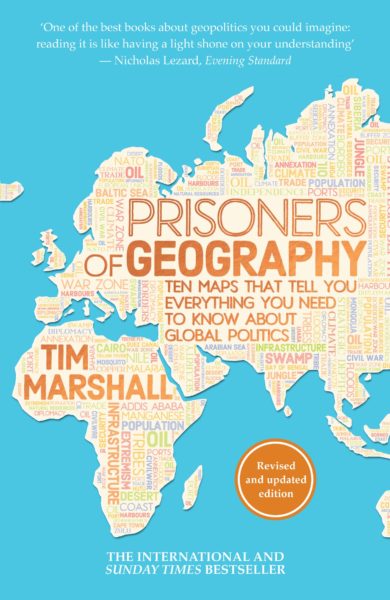Published on 30 Mar 2017
When the Russian government promises to continue the war and support the Entente with another offensive, the Germans are allowing Vladimir Ilyich Ulyanov aka Lenin to board a train from his exile in Switzerland to Russia. The British Army once again underestimates the Ottoman Empire at the 1st Battle of Gaza and the Toplica Uprising ends.
March 31, 2017
Lenin Takes The Train – First Battle of Gaza I THE GREAT WAR Week 140
“You can’t buy my internet data. You can’t buy your internet data. That’s not how this works“
At Techdirt, Mike Masnick bravely attempts to tamp down the hysteria over this week’s vote in Congress to kill broadband privacy protections (which, as he notes, hadn’t yet come into effect anyway):
People are rightfully angry and upset about this. The privacy protections were fairly simple, and would have been helpful in stopping truly egregious behavior by some dominant ISPs who have few competitors, and thus little reason to treat people right. But misleading and misinforming people isn’t helpful either.
[…]
But here’s the real problem: you can’t buy Congress’ internet data. You can’t buy my internet data. You can’t buy your internet data. That’s not how this works. It’s a common misconception. We even saw this in Congress four years ago, where Rep. Louis Gohmert went on a smug but totally ignorant rant, asking why Google won’t sell the government all the data it has on people. As we explained at the time, that’s not how it works*. Advertisers aren’t buying your browsing data, and ISPs and other internet companies aren’t selling your data in a neat little package. It doesn’t help anyone to blatantly misrepresent what’s going on.
When ISPs or online services have your data and “sell” it, it doesn’t mean that you can go to, say, AT&T and offer to buy “all of Louis Gohmert’s browsing history.” Instead, what happens is that these companies collect that data for themselves and then sell targeting. That is, when Gohmert goes to visit his favorite publication, that website will cast out to various marketplaces for bids on what ads to show. Thanks to information tracking, it may throw up some demographic and interest data to the marketplace. So, it may say that it has a page being viewed by a male from Texas, who was recently visiting webpages about boardgames and cow farming (to randomly choose some items). Then, from that marketplace, some advertisers’ computerized algorithms will more or less say “well, I’m selling boardgames about cows in Texas, and therefore, this person’s attention is worth 1/10th of a penny more to me than some other company that’s selling boardgames about moose.” And then the webpage will display the ad about cow boardgames. All this happens in a split second, before the page has fully loaded.
At no point does the ad exchange or any of the advertisers know that this is “Louis Gohmert, Congressional Rep.” Nor do they get any other info. They just know that if they are willing to spend the required amount to get the ad shown via the marketplace bidding mechanism, it will show up in front of someone who is somewhat more likely to be interested in the content.
That’s it.
* Amusingly, Rep. Gohmert voted to repeal the privacy protections, which makes no sense if he actually believed what he was saying in that hearing a few years ago…
H/T to Amy Alkon for the link.
On a related note, LifeHacker posted a recommendation for “The Laziest, Cheapest Way to Circumvent Your Snooping ISP“. (Spoiler: it’s Opera). I use Opera, but not exclusively … I also use Brave, Chrome, and Firefox on a daily basis.
The likely impact of legalized marijuana on healthcare costs
Colby Cosh, a self-confessed hardcore druggie (okay, he admits “I’m not a big pot smoker, although it is a point of honour with me to admit in print that I have done it plenty of times”), on some interesting aspects of next year’s “Cannabis Day” legalization target:
What leapt out at me in [recently elected MP and former cop Glen] Motz’s stream of consciousness was a claim that “health-care costs are starting to rise” in the recreational-marijuana states. What could this mean? The U.S. doesn’t have single-payer universal public healthcare, and its programs for the poor, the aged, and veterans are all administered federally. But if Motz wants to bring up health-care costs, we can certainly go there.
They found that when individual states legalized medical marijuana (as 28 now have), doctors in those states began to fill fewer prescriptions addressing medical conditions for which there is some evidence that marijuana might help — anxiety, nausea, seizures, and the like
One of the most remarkable economic findings of any kind on piecemeal marijuana acceptance in the U.S. appeared in the journal Health Affairs last July. It became famous almost immediately as the “Medicare Part D study”: two policy specialists at the University of Georgia in Athens looked at data on 87 million pharmaceutical prescriptions paid for by the federal government from 2010 to 2013. They found that when individual states legalized medical marijuana (as 28 now have), doctors in those states began to fill fewer prescriptions addressing medical conditions for which there is some evidence that marijuana might help — anxiety, nausea, seizures, and the like.
By “fewer” I mean “a lot fewer.” The study estimated, for example, that medical marijuana reduced prescriptions for pain medication by about 1,800 per physician per year. That estimate could be off by an order of magnitude and still be pretty impressive. It is only one study, but when the researchers double-checked their results by looking at conditions that nobody thinks marijuana is indicated for, they found no declines in prescribing.
Marijuana is still an outlawed Schedule I drug under U.S. federal law, doctors even in medical-marijuana states “recommend” the stuff rather than formally prescribing it, and patients have to pay for it. Moreover, pot may be relatively unpopular with the (mostly pension-age) Medicare-eligible population. The Medicare Part D study shows, if nothing else, that American medicine is already making heavy professional use of marijuana. The authors think it might have saved Medicare half a billion dollars over the four-year study period. Perhaps there are concomitant harms that this study does not account for. It is hard for me to imagine what they might be, but I am not a politician.
Why Do Some English Speaking Countries Pronounce Z as “Zed” and Others as “Zee”?
Published on 19 Mar 2017
It’s not just the British that pronounce “z” as “zed”. The vast majority of the English speaking world does this. The primary exception, of course, is in the United States where “z” is pronounced “zee”.
QotD: Government as Superman … reality as Kryptonite
… politics is all details. And each of those tiny little details has to be endlessly negotiated, because the system is set up precisely to frustrate a powerful guy with a big idea. You may recall your middle school social studies teacher talking about “checks and balances.” This is what that looks like. Kryptonite, if you will.
So there is no shortcut around the long days spent debating whether the tax credit should be 3.45 percent or 3.65 percent, and drafting pages of legislation that amend some obscure subclause of the immigration code to read “that” rather than “which,” and ending up with a middling, pork-riddled program that costs too much and doesn’t do anything close to what its visionary proponents promised.
Governing is not like building a building; it’s not like running a business. It’s like, well, trying to herd three branches of government in roughly the same direction. These branches are composed of thousands of people, each of whom has their own agenda, and represents millions more, each of whom has their own agenda, and will hound out of office anyone who strays too far from it. This is a wildly ponderous and inefficient way to do anything, which is why I am a libertarian; almost anything can be done better when you’re not trying to build it by a committee.
But in a representative democracy, this is what we have. There is no superhero strong enough to overcome the villain. There is actually not even a villain to defeat, only the unslayable amoeboid agglomeration of 300 million citizens’ worth of unenlightened self-interest. In the immortal words of P.J. O’Rourke: “Every government is a parliament of whores. The trouble is, in a democracy the whores are us.”
Megan McArdle, “Voters Want Change. Candidates Disappoint. Repeat.”, Bloomberg View, 2015-08-21.
March 30, 2017
You can now have beer brewed to your taste (as encoded in your genome)
For those with a taste for custom-brewed beer (and a very big budget), you can now have a batch of beer created to match your taste preferences, scientifically:
London-based Meantime Brewing Company, acquired a year ago by Belgian beverage multinational Anheuser-Busch InBev, wants to sell you beer tuned to your taste.
To do so, the company plans to direct willing customers to genetic testing service 23andMe – the Silicon Valley personal genomics biz that’s slowly emerging from its near death experience at the hands of US health regulators – to evaluate their genetic taste proclivities.
For a mere £25,000 (~$31,200), beer lovers who prefer entrusting purchasing decisions to science rather than self-knowledge can buy 12 hectolitres (about 2,100 Imperial pints or 2,500 US pints) of ale tailored to taste preferences encoded in their genome.
Customers supply their saliva, 23andMe sorts the genes, and Meantime crafts a beer to fit inborn affinities.
“Pioneering personal genetics company 23andMe will assess hereditary variations in your oral taste receptors (the TAS2R38 gene) to reveal the genetic variants that could explain personal preferences towards specific flavour profiles within beer, such as sweetness and bitterness,” the company explains on its website.
And if the genetically dictated balance of flavors doesn’t align with actual taste preferences, Meantime has left itself an out – customers get a consultation with Brewmaster Ciaran Giblin to adjust the flavors if necessary.
That’s almost certainly for the best since, as 23andMe points out, the role of genetics in taste preferences is uncertain. “Scientists aren’t yet sure how much of our taste preferences are genetic, but estimates are generally around 50 per cent,” the company says in the Taste report it offers subscribers.
Words & Numbers: The Arts Will Survive Without Your Taxes
Published on 29 Mar 2017
This week, James & Antony experiment with a slightly longer format, and get into the issue of government funding for the arts.
Another Japanese “destroyer” joins the fleet
Due to a long-standing aversion to calling certain kinds of vessels by their most appropriate name, the Japanese Maritime Self-Defence Force (because Japan’s constitution prohibits the country having a “navy”, post-1945) commissioned their latest “destroyer” last week:

JS Izumo DDH-183, sister-ship of the just-commisioned JS Kaga DDH-184, both helicopter-equipped destroyers, officially.
I know what you’re thinking … “That doesn’t look like a destroyer to me” … but that’s what Japan officially designates ships like this to be, so that’s what they’re called. Strategy Page has more:
On March 22nd Japan put into service a second 27,000 ton “destroyer” (the Kaga, DDH 184) that looks exactly like an aircraft carrier. Actually it looks like an LPH (Landing Platform Helicopter) an amphibious ship type that first appeared in the 1950s. This was noted when Izumo, the first Japanese LPH was launched in 2012 (it entered service in 2015). The Izumos can carry up to 28 aircraft and are armed only with two 20mm Phalanx anti-missile cannon and launcher with sixteen ESSM missiles for anti-missile defense.
LPHs had no (or relatively few) landing craft but did carry a thousand or more troops who were moved ashore using the dozen or more helicopters carried. The first American LPH (the USS Iwo Jima) was an 18,400 ton ship that entered service in 1961, and carried 2,000 troops and twenty-five helicopters. Until Izumo showed up, several nations operated LPHs, and Britain and South Korea still do. The U.S. retired its last LPHs in the 1990s, but still have a dozen similar ships that include landing craft (and a well deck in the rear to float them out of) as well as helicopters. A few other nations have small carriers that mostly operate helicopters but carry few, if any troops.
The Izumos are the largest LPHs to ever to enter service. It differs from previous LPHs in not having accommodations for lots of troops and having more powerful engines (capable of destroyer-like speeds of over fifty-four kilometers an hour). Izumo does have considerable cargo capacity, which is intended for moving disaster relief supplies quickly to where they are needed. Apparently some of these cargo spaces can be converted to berthing spaces for troops, disaster relief personnel, or people rescued from disasters. There are also more medical facilities than one would expect for a ship of this size. More worrisome (to the Chinese) is the fact that the Izumo could carry and operate the vertical take-off F-35B stealth fighter, although Japan has made no mention of buying that aircraft or modifying the LPH flight decks to handle the very high temperatures generated by the F-35B when taking off or landing vertically. The Chinese are also upset with the name of this new destroyer. Izumo was the name of a Japanese cruiser that was a third the size of the new “destroyer” and led the naval portion of a 1937 operation against Shanghai that left over two-hundred-thousand Chinese dead. The Chinese remember all this, especially the war with Japan that began unofficially in 1931 and officially in 1937.

IJNS Izumo at anchor 1932 (Colourized), via Wikimedia
How Germany’s Victories weakened the Japanese in World War 2
Published on 24 Mar 2017
This video gives you a short glimpse on how the war in Europe had a detrimental effect on the Japanese Economy.
Military History Visualized provides a series of short narrative and visual presentations like documentaries based on academic literature or sometimes primary sources. Videos are intended as introduction to military history, but also contain a lot of details for history buffs. Since the aim is to keep the episodes short and comprehensive some details are often cut.
QotD: “Scientific” forestry
Seeing Like A State is the book G.K. Chesterton would have written if he had gone into economic history instead of literature. Since he didn’t, James Scott had to write it a century later. The wait was worth it.
Scott starts with the story of “scientific forestry” in 18th century Prussia. Enlightenment rationalists noticed that peasants were just cutting down whatever trees happened to grow in the forests, like a chump. They came up with a better idea: clear all the forests and replace them by planting identical copies of Norway spruce (the highest-lumber-yield-per-unit-time tree) in an evenly-spaced rectangular grid. Then you could just walk in with an axe one day and chop down like a zillion trees an hour and have more timber than you could possibly ever want.
This went poorly. The impoverished ecosystem couldn’t support the game animals and medicinal herbs that sustained the surrounding peasant villages, and they suffered an economic collapse. The endless rows of identical trees were a perfect breeding ground for plant diseases and forest fires. And the complex ecological processes that sustained the soil stopped working, so after a generation the Norway spruces grew stunted and malnourished. Yet for some reason, everyone involved got promoted, and “scientific forestry” spread across Europe and the world.
And this pattern repeats with suspicious regularity across history, not just in biological systems but also in social ones.
Scott Alexander, “Book Review: Seeing Like a State”, Slate Star Codex, 2017-03-16.
March 29, 2017
Teddy Bridgewater’s recovery appears to be ahead of expectations
 The darkest moment of the 2016 Vikings season was the severe knee injury sustained by quarterback Teddy Bridgewater just before the start of the regular season. While initial reports were confused, it appeared that the injury was potentially life-threatening and that Teddy might never play again. Yesterday, Teddy posted a short video to his Instagram account:
The darkest moment of the 2016 Vikings season was the severe knee injury sustained by quarterback Teddy Bridgewater just before the start of the regular season. While initial reports were confused, it appeared that the injury was potentially life-threatening and that Teddy might never play again. Yesterday, Teddy posted a short video to his Instagram account:
So this surfaced on Reddit today. Appears to be Teddy Bridgewater dropping back and throwing. #Vikings pic.twitter.com/KJlyUJu1BZ
— Cameron DaSilva (@camdasilva) March 28, 2017
At the Daily Norseman, Christopher Gates reacts:
Obviously, he doesn’t look quite the same at this point, but again … he’s seven months removed from his leg almost falling off, so it’s still pretty impressive. We’ve seen Bridgewater doing agility drills in videos previously, but this is the first time we’ve seen him doing what Mike Zimmer might refer to as “football-related activities.”
We know that Bridgewater has a long way to go (and, if he’s attempting to get back for 2017, a short time to get there). But after what he meant to the team in his first two seasons and how many Vikings fans immediately took to him since he was drafted, it’s hard not to be happy as heck to see this.
Hopefully we’ll have more … and continuing positive … updates on Teddy Bridgewater’s progress.
The Star Tribune reported that Vikings general manager Rick Spielman made a surprising comment on Teddy’s recovery (unrelated to yesterday’s video):
How is Vikings quarterback Teddy Bridgewater’s recovery from a devastating knee injury coming along? This might be a clue: GM Rick Spielman is making a surprising link between Bridgewater’s recovery work and that of former Viking Adrian Peterson during his now legendary comeback. Spielman, at the NFL owners’ meetings, said he watched quarterback Bridgewater last week and was impressed with what he saw. “I know he’s been working extremely hard. As far as a timeline, I know he was in last week and continuing to rehab with our medical staff and [head athletic trainer] Eric Sugarman,” Spielman said. “I can tell you there is no one I’ve seen other than Adrian [Peterson] when he came back from his ACL that has worked as hard as Teddy is working. And this is more significant than just an ACL. “But Teddy is incredible with the attitude and work ethic that he’s put in to get back on the field as quickly as we can.”
Update, 30 March: The infamous Bridgewater Underground is apparently active again!
And when the ‘he’ll never play again’ propaganda reached our shores, more left, and soon we were down to a scant few.
But cracks began to show in The Bradford Army. Small at first, but they grew larger, and more obvious. Obvious to the point they could no longer be ignored if you knew what you were looking for. It took us awhile to realize we weren’t dead, but hope soon returned to us in the form of Instagram and Snap Chat, and hope is a powerful aphrodisiac. Soon, people began returning, and our movement began to rebuild. Slowly at first, but you could feel momentum returning to our cause.
We’ve sent out some cryptic messages, and with each one, more partisans flock back to us. Our numbers grow by the day, and one thing seems clear — we’re coming home. And when we do, we will be ready to reclaim our throne. But we also know that with that, there are dark clouds on the horizon, darker than any dastardly coup.
Which is why these days, my thoughts consume me and sleep escapes me. With each second, the hour draws near, and with each hour, one thing feels more and more certain.
War looms, like Mordor once loomed over Middle Earth. A storm gathers, and it feels like a storm that can’t be avoided. The Bridgewater Underground wants peace, but the Bradford Army is entrenched, ready to defend their leader to the last.
But make no mistake, we are returning home. Home to what is rightfully ours. Maybe not today, maybe not next month, but we will return. We desire a peaceful transition, and we hope no Internet message board blood will be shed. But if there is to be war, then let there be war. It will be uglier than the Ponder-Webb Quarterback Message Board Wars of aught 12 and aught 13, but we are steeled in our resolve.
We are the Bridgewater Underground, and we are coming home.
You can’t really understand history without considering the geography
At Samizdata, Brian Micklethwait discusses Tim Marshall’s book, Prisoners of Geography:
Britain and Western Europe, and then the other parts of the world where English is the dominant language, have mostly been blessed with a degree of geographically conferred freedom of manoeuvre that is denied to the inhabitants of pretty much all other nations. That is why these places got rich first. And it also now means that we Euros and Anglos are able to believe, as a matter of practical political policy rather than merely as privately pious aspiration, in a wide range of idealistic things of very variable value – things like freedom, democracy, equality, human rights, freedom for women, “social justice”. and so on and so forth – things that geographically more constrained people can only, as yet, dream of, and which they often regard as more as a threat to their own ways of doing things than as any kind of promise.
[…]
The word “maps” being in its subtitle, along with the bombastic claim that these maps tell you all you need to know about the world, these maps ought to be really, really well done, from the graphic point of view. But to my admittedly fading eye, they seemed to be not that good. On their own, they tell you nothing like everything about the world, which is why you actually need to read the book to get the points of all the maps. I was particularly disappointed by how the mountains look in these maps. Along with rivers, mountains are a big deal in this book, as you would expect them to be. But, in these maps, the mountains often scarcely register. It doesn’t help that the maps are done only with black ink on white paper. Colour would have helped. But even black ink could have been used, I feel, with somewhat greater clarity. I had to look quite hard to work out where these various mountains were. But, as I say, maybe that’s just me. My eyesight is definitely not what it was.
The mountainous insight I recall with particular pleasure is Marshall’s observation that the hostility between India and China would have been and would now be far greater, were it not for the most impenetrably formidable mountains on earth being at the boundary between these two civilisations. Contrast those impenetrable Asian mountains with that famous gap in the mountains in northern Europe, which results in a gigantic military parade ground with no natural barriers stretching from the Pyrenees to the Urals.
In addition to knowing better about Europe’s mountains, I now sort of know a whole lot more than I did about the mountains of South America. South America is, for me, one of the less fascinating places in the world, because, being so geographically cut off from the rest of the world and being of significance mostly only to their northern neighbours, South American mistakes count for a lot less than mistakes can elsewhere, especially mistakes made by the USA and Europe of course. South America, you might say, is basically just a big clutch of European mistakes.
Speaking of European mistakes, Marshall is very good on the habit of late nineteenth century Europeans of drawing straight lines upon maps of foreign parts, in defiance of geographical and consequent social and cultural and now “national” realities on the ground. The USA gets along fine despite all the straight lines that it contains dividing its states, because these states are, fundamentally, still very united, at least in the sense that everyone in them is quarrelling about the same things within the same political institutions. But the Middle East is still trying to shake free of its baleful legacy of fake states, which Europeans and now also Americans, all motivated by the need for oil, have expended so much of their own treasure and so much Middle Eastern blood trying to keep in being.
The long political road to a legalized marijuana market
Chris Selley discusses the federal government’s much-hinted-at full legalization plan which is expected to be implemented in time for Canada Day next year, and what it means for the existing quasi-legal market:
In any event, the legislation will have the benefit of forcing the provinces finally to come to grips with their policy preferences.
[…]
The others will soon have to follow suit. And they should be considering what to do if legalization doesn’t happen, as well. Tabling the legislation and any associated boosterism is only going to energize the open black market that has flourished in Canadian cities’ storefronts under the polite fiction of “dispensaries,” making a hollow mockery of the law.
The cries of injustice when police bust these businesses have been silly. Policing marijuana isn’t a great use of resources at any time, if you ask me, but a Liberal campaign promise isn’t worth the paper it’s printed on; it’s certainly not a legal defence. If you’re a “budtender” working for minimum wage in a “dispensary,” now would be a good time to realize that, under the law, you’re a minimum wage drug dealer.
In Toronto, it has been instructive, if not surprising, to see that the dispensary model works. People value the expertise, the variety of retail environments, the fact it’s not some dodgy dude on a bike who wants to hang out for an hour. The only things wrong with the model are byproducts of prohibition: lots of cash on hand makes them a target for robberies, for example, which often go unreported.
Across the country, people are happily buying marijuana the way people in jurisdictions all over the world (though certainly not in Ontario) buy their other intoxicants of choice.
That’s a lesson for Canadian jurisdictions to learn if the Liberals legalize marijuana: the private sector can handle it. And it’s a lesson if it stays illegal, too. The law is the law, but if Ottawa’s going to encourage people to break it, the ensuing mess doesn’t have to be the provinces’ problem.
Instead of enforcing it very sporadically, they could just not enforce it at all. Better yet, under such a policy, they could try to remedy some of the problems that prohibition creates in the storefront market.
How to set up & tune a tablesaw
Uploaded on 29 Jun 2008
Original post on our site with additional information, plans, questions & comments: http://www.thewoodwhisperer.com/videos/tablesaw-setup-tuneup-pt-1/
Our tools are no good to us if they aren’t tuned up properly. As the “heart” of the workshop, its crucial that our tablesaws are configured to perform their best. So whether you are setting up a new saw, or tuning up your current one, this video guide will get you where you need to be. Part 1 covers three different methods for aligning the miter slot to the blade as well as a simple technique for attaching and leveling the extension wings.
QotD: The humble vodka soda
My favourite drink? Vodka soda on the rocks, no lemon. Unpretentious, dependable, easy to slap together, gets the job done. It’s basically the Ford F-150 of cocktails. And clear as rain, so it won’t stain my wife’s dress if some good-time Charlie slaps me on the back at a party. For years, it has been my odourless, tasteless, ten-ounce refuge of gastro-utilitarian sanity in a world full of foodies gone mad.
But those days are over: the vodka soda has gone the way of wine, Scotch, and gourmet hot sauce. Order one at any velvet-rope bar or restaurant, and the waiter follows up by asking your preferred brand of hooch — under the demonstrably false conceit that the human tongue can distinguish between what are effectively different varieties of windshield-wiper fluid.
Last month, when a waiter launched into an especially long list of unpronounceable Russian and Scandinavian words apparently corresponding to fashionable vodka brands, I felt as if I were in a scene from “The Emperor’s New Clothes.” I really can’t tell the difference. Just give me the cheapest one on the list were the words on my lips.
Of course, I said nothing of the sort, because I didn’t want to come off as a rube. So instead, I declared emphatically, “Oh, Grey Goose, please” — recalling at random the last brand I’d seen advertised in an upscale travel magazine.
Moments later, the waiter returned with my drink, and it tasted fine. Which is to say, it tasted exactly like every other vodka soda I had ever tasted — or, indeed, that had ever been tasted by any other human in the history of fermented spud juice.
This, more than anything else, is what I have come to resent about foodie culture: Not just that it is pretentious and expensive. Not just that it makes me feel guilty about the Cheez Whiz sandwiches I put in my kids’ lunch boxes. But that it turns us all into liars.
Jonathan Kay, “Lies My Waiter Told Me: Foodie culture has invaded my vodka soda. It’s time to fight back”, The Walrus, 2015-08-17.






